Consensus algorithm: definition and purpose

The main characteristic of the blockchain is that it is decentralized, which means that there is no central management body. That is, the blockchain is equally managed by the participants who make the transactions and keep the network running. To ensure security in the execution of transactions and to save the network from the risk of being hacked by fraudsters, every blockchain network has a consensus mechanism, which means a single opinion on which transaction is considered correct.
In a new S-Group blog article, we explain what the blockchain consensus algorithm is, how it works, and its main types.
What is a consensus algorithm and how it works
Before parsing the concept of the consensus algorithm, let's briefly recall the definition of blockchain and how it works. The Blockchain is a decentralized, distributed database, represented as a chain of blocks, which is used to store information about transactions. Each of these transactions is recorded as a “block” of data. But before the block can be added to the network, it must be verified by computer networks. In this way, the system helps protect the blockchain from fraudulent activity.
Consensus mechanisms are implemented in blockchains to ensure that all participants in the network agree to a single version of the story. They aim to make the system fault-tolerant and eliminate the risk of hacker attacks.
Thus, a consensus algorithm is the mechanism or protocol by which network participants determine which blockchain transactions are valid and which are not. The consensus algorithm is a core component of the blockchain network because it ensures agreement, trust, and security in a decentralized network. It is also used to prevent a 51% attack. This means that a particular validator cannot control the entire network, and the consent of 51% of participants will be required to validate a transaction.
The consensus algorithm in blockchain is necessary for the following reasons.
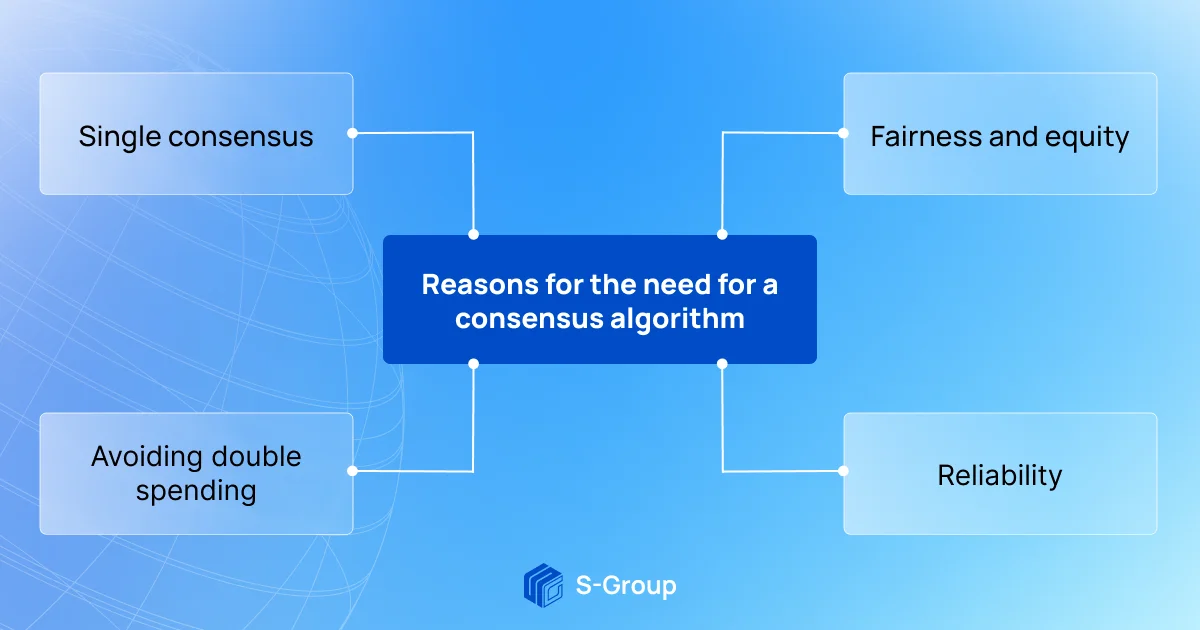
1. Single Consent. Enables participants to easily and securely reach agreement on the actions and state of the network.
2. Preventing double spending. The consensus protocol prevents double spending of digital currency by adding only verified and valid transactions to the blockchain.
3. Fairness and equity. Open source allows any user to join the blockchain and become a member of the network.
4. Reliability. Guarantees fault tolerance, operability, and resistance to fraudulent hacking threats.
Types of consensus algorithms
Today, various consensus models have been developed that differ in functionality, but retain the basic goal: to reach agreement and ensure network reliability.
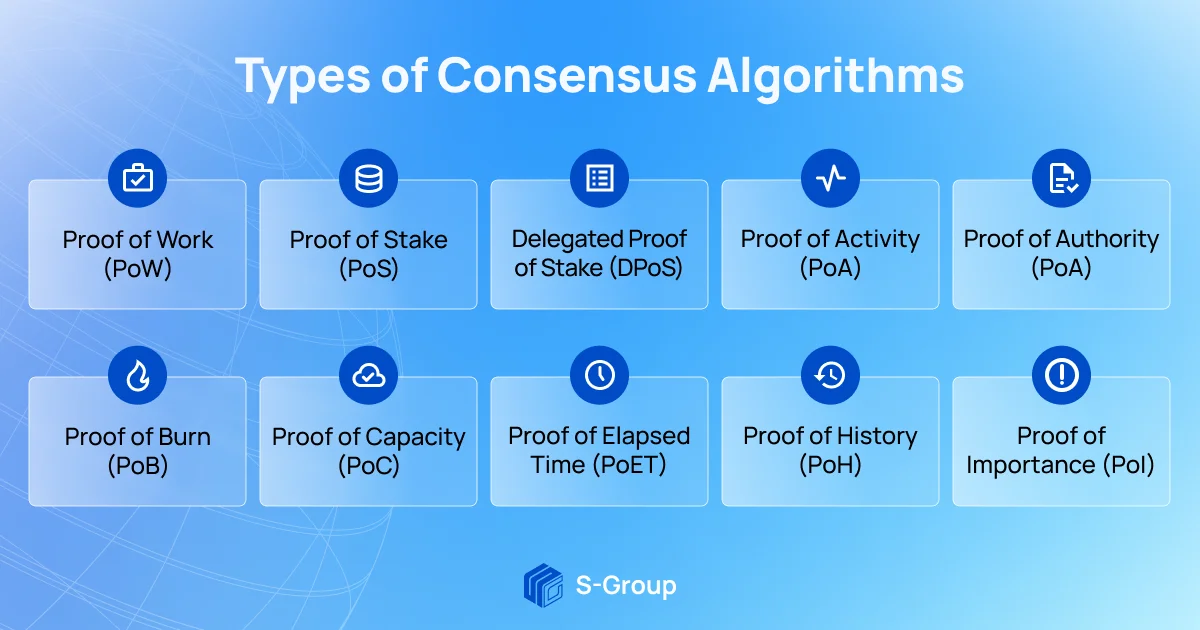
Despite such an abundance of consensus algorithms, most often blockchain projects use the first two types: PoW and PoS. Let's take a closer look at them.
Proof of Work (PoW)
The very first consensus mechanism, first mentioned in 1993. The active use of PoW began in 2008, when Satoshi Nakamoto founded the first cryptocurrency Bitcoin, which is supported by this mechanism. The essence of PoW is that miners (members of the network) solve complex mathematical problems to mine a new block. The speed at which the problem is solved depends on the power of the miner's computing equipment. Therefore, the higher the power of the participant's computer, the faster he will solve the problem and get the reward for mining the block.
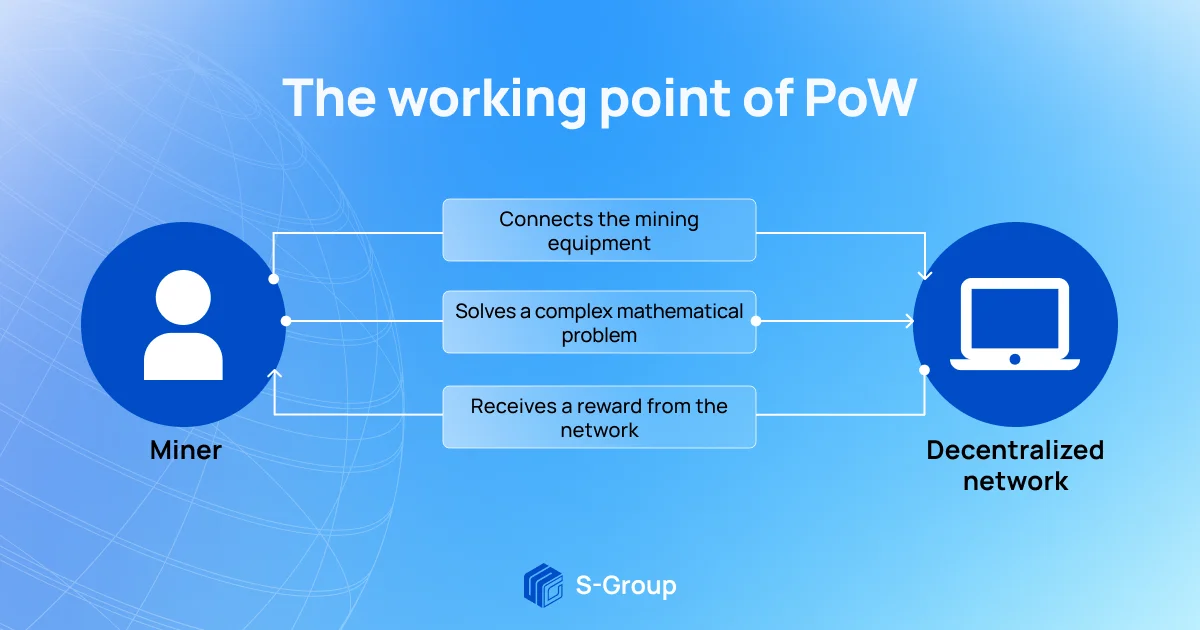
The main disadvantages of the PoW algorithm are the issue of scalability and operating costs due to the need to buy expensive computing equipment that consumes a lot of electricity. For example, Bitcoin mining now requires full-fledged mining farms with ASIC devices (special equipment for mining). Such equipment is very expensive and consumes just as much energy. Therefore, many representatives of the cryptocommunity question the profitability of mining cryptocurrencies, especially Bitcoin.
The advantages of the PoW mechanism are high security and reliability in confirming transactions through cryptographic tasks. Using Proof of Work (PoW) to verify each transaction helps the network prevent double-spending. If someone tries to duplicate a transaction on the network, it will be noticed in the system and will not be accepted. Consequently, no one can change the transaction after it has been verified and approved by each node member.
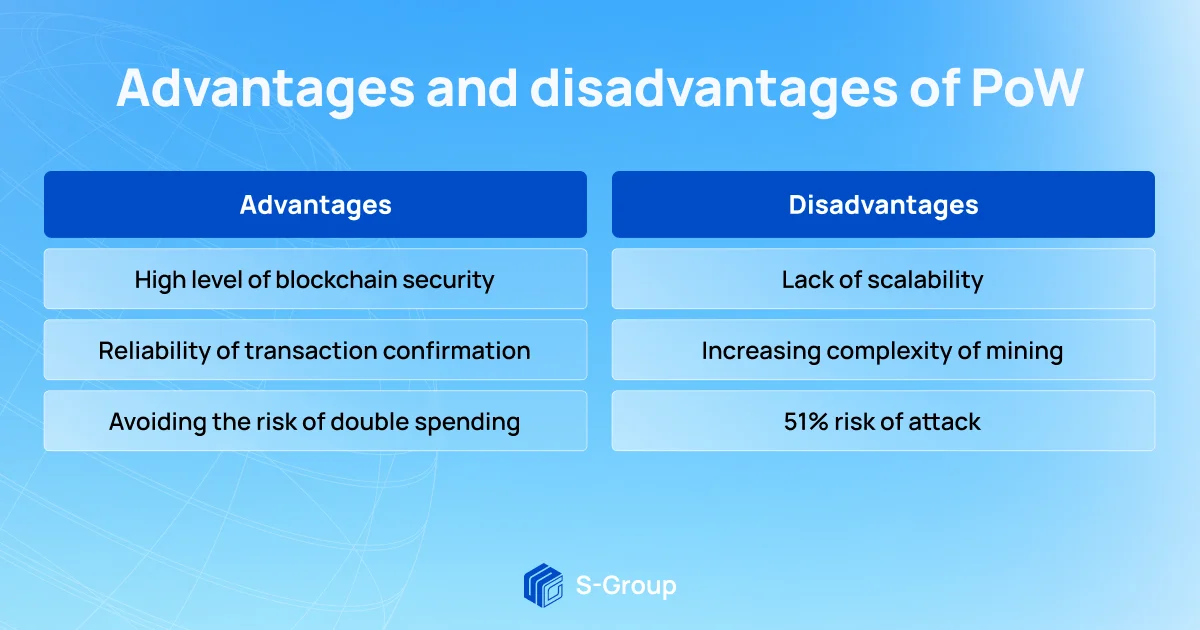
Proof of Stake (PoS)
This consensus mechanism was created as an alternative to PoW and to solve its vulnerabilities, such as insufficient scalability and high maintenance costs. PoS is a greener algorithm due to the nature of how it works. Here, validators participate in transaction validation by blocking some of their coins in the wallet, sending them to the liquidity pool. The validator with the highest rate is chosen to create a new block and add it to the blockchain. For this, he receives a transaction fee as a reward. Examples of blockchain networks using Proof of Stake are Ethereum 2.0, Cardano, Polygon and others.
In other words, instead of investing in expensive hardware to solve complex puzzles, validators invest in platform tokens and send them to stake in a special smart contract for a certain time. After that time, users are rewarded with native network tokens. Staking returns for validators and cryptocurrency holders depend on the issuance rate as well as the share of coins in circulation.
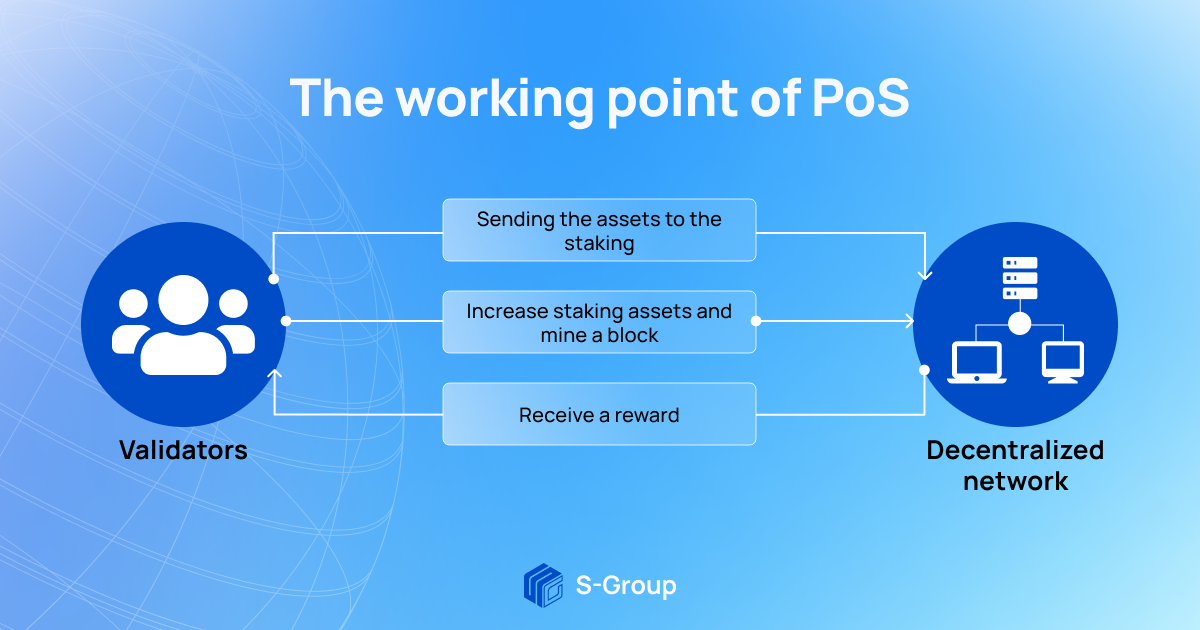
The main advantages of PoS are its resilience and 51% attack protection, as well as its harmlessness to the environment.
The disadvantages of PoS are the potential risk of centralization, as the system favors users with many tokens.
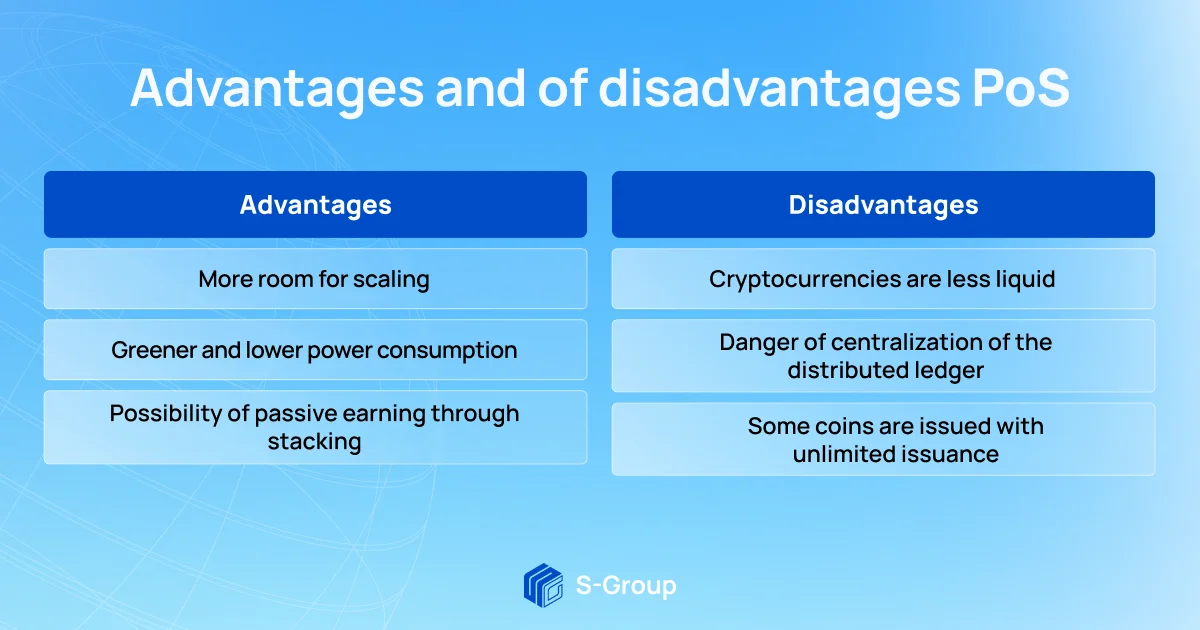
Key takeaways
The consensus mechanism is an important component of the blockchain network that provides security against fraudulent attacks as well as the risk of double-spending. It is the consensus algorithm that is responsible for making the network work and achieving trust between all participants with minimal resources, preserving the integrity and transparency of the decisions made.
Share
Interesting
Would you like to receive a digest of articles?
One email with the best articles of the week.
Sign up so you don't miss anything.